#major imre
Explore tagged Tumblr posts
Text
https://hold.hu/holdblog/klimavaltozas-koltsegei-kornyezetvedelem-gdp-novekedes/
3 notes
·
View notes
Text
MOVERS RAHHHHHHHHHHHH!!!!!!!!!!!!!! THEY'RE JUST SO









Sorry had to get that out of my system.
10 notes
·
View notes
Text








Déryné, hol van? - 1975. Rendezte: Maár Gyula. Főszerepben: Törőcsik Mari, Kállai Ferenc, Kern András, Sulyok Mária, Major Tamás, Ráday Imre. https://podcasters.spotify.com/pod/show/magyarfilmekatolcettig
#mfac#magyar filmek ától cettig#film#movie#hungarian#magyar#régi#retro#1975#déryné hol van#maár gyula#törőcsik mari#kállai ferenc#kern andrás#sulyok mária#major tamás#ráday imre
5 notes
·
View notes
Note
The poll results are definitely sus. I remember some Nia stan saying they would create accounts next time there's a poll and her being ahead of Imre by that significant margin (it's 34% now vs 30%) is telling lol Cheaters!
ACTUALLY that person never said who they stanned so unless there is more evidence we must assume innocence until proven otherwise!
Although it is strange how quickly it changed, it can just be that more people hadn’t seen the poll as of yet and I do think Nia stans are the silent major group against Imre’s vocal major group (sorry my reasonable side is unfortunately out today not fun 😔)
Also it might be that even Nia haters still want to see how her mind works, some people likely voted not for who they like but who they want to know more about
#usually I like promoting rivalry between the factions#but it’s Christmas Eve let’s be at peace#the polls#the stats#wwc
33 notes
·
View notes
Text
Writing Notes: Health
Health - a state of complete physical, mental and social well-being and not merely the absence of disease or infirmity (WHO, 2019).
This definition has been subject to controversy, as it may have limited value for implementation.
Generally, the context in which we live our lives is critical for our health and quality of life.
It is increasingly recognized that health is maintained and improved not only through the advancement and application of health science, but also through intelligent lifestyle choices and efforts of the individual, as well as larger society.
Main Determinants of Health According to WHO
Social environment
Economic environment
Physical environment
Individual characteristics and behavior
Global Indicators of Health
Health indicators - quantifiable characteristics of a population which researchers use for describing the health of a population.
Adopting a standard system with reliable measures for defining health is important for global monitoring of changes in health.
Researchers using data collected from around the world look for patterns in identifying, preventing, and treating disease.
There are 3 common global health indicators identified by The World Health Organization (WHO) that directly and indirectly measure and monitor global health:
Life expectancy
Infant mortality
Subjective well-being
These 3 indicators serve as standard measures to assist health professionals working in both developed and developing countries.
LIFE EXPECTANCY
A statistical measure of the average time an organism (in our case human) is expected to live, based on the year of its birth, its current age and other demographic factors including gender.
There are great variations in life expectancy between different parts of the world, mostly caused by differences in public health, medical care, and diet.
Comparing life expectancies from birth across countries can be problematic.
There are differing definitions of live birth versus stillbirth even among more developed countries, and less developed countries often have poor reporting.
INFANT MORTALITY
Refers to the the death of young children under the age of 1.
Infant mortality rate (IMR) - the number of deaths of children under one year of age per 1000 live births.
IMR - is used to standardize infant deaths for global comparisons (WHO, 2019).
Premature birth is the largest contributor to the IMR.
Other leading causes of infant mortality are birth asphyxia, pneumonia, congenital malformations, diseases and malnutrition.
Many factors contribute to infant mortality, such as the mother’s level of education, environmental conditions, and political and medical infrastructure.
Improving sanitation, access to clean drinking water, immunization against infectious diseases, and other public health measures can help reduce high rates of infant mortality.
SUBJECTIVE WELL-BEING
Is the scientific term for happiness and life satisfaction—thinking and feeling that your life is going well, rather than badly.
Levels of subjective well-being are influenced by both internal factors, such as personality and outlook, and external factors, such as the society in which they live.
Some of the major determinants of SWB are:
A person’s inborn temperament, the quality of their social relationships, the societies they live in, and their ability to meet their basic needs.
Sources: 1 2 3 4 ⚜ Writing Notes & References
#writing notes#psychology#health#writeblr#spilled ink#dark academia#writing reference#literature#writers on tumblr#writing prompt#poetry#poets on tumblr#creative writing#fiction#writing inspiration#writing inspo#writing ideas#mikhail nesterov#post impressionism#art#writing resources
46 notes
·
View notes
Note
I picked up the funny Kuhn book on your rec, and noticed Karl Popper on the same shelf, framing himself in contrast. Do you have/know of any good critiques on Popper in general, or his indeterminism in particular? I'm guessing he didn't convince every Marxist and someone's bound to have responded by now.
yea popper sucks. i mean kuhn himself was responding to / critiquing popper; they very famously had a long ongoing dispute. but like i said before, kuhn is also not where it's at imo. like, not that academic citations are the be-all end-all of intellectual value, but there are reasons you don't typically see either of these guys cited by people working in history / philosophy of science these days lol.
anyway in regards to the marxism angle of this i will say: a major problem with hist/philsci is that these disciplines are pretty ensconced in universities (conservative institutionally & intellectually) and have also taken a long time to even start looking beyond the horizons of great man history, the 'western canon', &c. so the lack of marxists / communists in these fields is like, even more pronounced than in academic history more broadly. like it's insane that people like bob young and roger cooter and adrian desmond are still, like, standouts in this respect lol. so, although there are many many marxists who have responded to popper on those terms, and many many historians and philosophers of science who have responded on that side, the sliver of overlap here is a lot smaller than it should be.
i would definitely read with a critical eye and be on the lookout for places where these texts fail specifically because their authors are not engaging in materialist or properly historicised analysis, or are just blatantly reactionary themselves, in different ways to popper. but, a few places to start with political histsci and philsci critiques of him, or just useful accounts of his legacy and critics:
The Cambridge Companion to Popper (2016). Jeremy Shearmur and Geoffrey Stokes (eds.). <-usual disclaimer that cambridge edited vols. are methodologically, politically, and epistemologically playing it VERY safe. you often want to read them 'backwards', ie, read for what's not being said as much as for what's actually in there. consider this a document that shows what sorts of debates are being permitted, centred, and accepted as 'mainstream' and 'reasonable'.
Epistemological Battles on the Home Front: Early Neoliberals at War against the Social Relations of Science Movement (2021). Beddeleem, Martin. Journal of the History of Ideas Volume: 82 Issue: 4 Pages: 615-636. 10.1353/jhi.2021.0035
Relations between Karl Popper and Michael Polanyi (2011). Jacobs, Struan & Mullins, Phil. Studies in History and Philosophy of Science Volume: 42 Pages: 426--435.
Thoughts on political sources of Karl Popper's philosophy of science (1999). Jacobs, Struan. Journal of Philosophical Research Volume: 24 Pages: 445-457
Popper and His Popular Critics: Thomas Kuhn, Paul Feyerabend and Imre Lakatos (2014). Agassi, Joseph. ISBN: 3319065866
Science and Politics in the Philosophy of Science: Popper, Kuhn, and Polanyi (2010). Mary Jo Nye. Chapter in: Epple, Moritz & Zittel, Claus (2010) Science as Cultural Practice. ISBN: 9783050044071
Karl Popper, the Vienna Circle, and Red Vienna (1998). Hacohen, Malachi Haim. Journal of the History of Ideas Volume: 59 Pages: 711-734.
Science, politics and social practice: Essays on Marxism and science, philosophy of culture and the social sciences in honor of Robert S. Cohen (1995) Gavroglu, Kostas; Stachel, John J.; & Wartofsky, Marx W. (Eds.). <-haven't read the popper chapter in this, can't promise it's good
34 notes
·
View notes
Text
halottak játszanak
Amikor nagyon régi filmeket nézek, azt szoktam mondani, "halottak játszanak nekünk". Lányom ezt nem szereti, mert szerinte ez így túl morbid, rossz hangulatot kelt. Én ezt másképp látom. Hálás vagyok a mozgókép műfajnak, hogy megőrzi őket nekünk, és akár évtizedekkel eltávoztuk után is élvezhetjük a játékukat.
A tizedes meg a többiek 1965-ben készült, fele annyi idővel a háború után, mint amennyi a mi csodás rendszerváltásunk óta eltelt. Az oroszok minden spájzban ott voltak, az 56-os politikaiakkal tele voltak a börtönök (már akit életben hagytak), mégis volt a levegőben valamiféle túlélő életöröm, és egy kis cinkos összekacsintás a diktatúra háta mögött. A nyolcvanas évek végén volt egy felbuzdulás, hogy legyen egy második rész, amiben arról lenne szó, kivel mi lett, a Tizedes hogyan boldogul a gmk-k, fusi és ügyeskedés világában. Aztán ez elült, mert rendszert váltottunk, mással voltunk elfoglalva. Aztán megint feltámadt az ötlet, de inkább csak beszélgetés vagy vágy szinten, mert mi magyarok mindig is szerettük a betyár virtust, legyen az Rózsa Sándor, a Tizedes, vagy a Viszkis. Ők helyettünk is borsot törnek a hatalom orra alá, és van bennük némi huncut, egészséges pofátlanság. Nem tudni, hogy írói tehetség, pénz, vagy központi akarat hiányzott az új folytatáshoz. Végül Sinkovits átigazolt az égi társulathoz, és nélküle ugye...
Úgy tudom, külföldön is nagyot ment a film, szerintem jól szemlélteti a magyarok túlélő képességét (és hogy miért nem fogadunk szót a nyakunkra ülő törvényhozóknak). Csilliószor láttam már de képtelen vagyok megunni :) Abban biztos vagyok, hogy a legjobb magyar filmek listáján mindig dobogó-közeli marad.
1970: Pálos György 1971: Szendrő József 1973: Keleti Márton (rendező) 1982: Ungváry László 1984: Bánhidi László 1986: Major Tamás, Márkus László 1988: Gobbi Hilda 1997: Kozák László 2001: Sinkovits Imre 2003: Horváth Tivadar 2005: Horváth Gyula 2006: Agárdy Gábor 2007: Darvas Iván 2008: Raksányi Gellért 2009: Iglódi István 2014: Szabó Gyula, Fülöp Zsigmond 2017: Gyimesi Pálma 2019: Kautzky József 2023: Cs Németh Lajos ... és még sokan mások
13 notes
·
View notes
Text
What facts are Palestinians keen to avoid?
Here are some neutral facts Palestinian people are keen to avoid:
One of the most frequently heard claims about the Palestinian people is that they suffer from a standard of living comparable to the poorest of African states.
However, Palestinians live to a ripe old age and Palestinians born today are easily expected reach 75 years of age. In terms of life expectancy the Palestinian people rank 10th out of 22 Arab states.
By contrast the average Somali Arab is unlikely to see their 52nd birthday. There are 132 countries in the world with lower life expectancy than the Palestinian people – including some incredibly wealthy Arab states such as Oman, Saudi Arabia, Jordan, Egypt, Iraq, and Syria – so life expectancy clearly is not a problem for the Palestinian people.
Another fascinating fact and indicator of standard of living are infant mortality rates (IMR) as this is a strong measure of the healthcare provided.
Thankfully the overwhelming majority of Palestinian babies live beyond the age of one, as only 15 out of 1,000 die before the age of one. This fascinating fact of life gives Palestinians people the 9th lowest infant mortality rate in the Arab world. Tragically 100 out of 1,000 Somali babies are lost in their first year of life.
Fascinatingly, the infant mortality rates throughout the Arab world are only lower in Bahrain, Qatar, Kuwait, Lebanon, UAE, Libya, Saudi Arabia, and Oman.
There are 116 out of 224 countries in the world with a worse IMR, so it seems pretty conclusive that in terms of health the Palestinians are not even close to having lowest living standards.
Perhaps one might argue that the Palestinian people may have their health, but they live a miserable existence.
However, once again the fascinating facts don’t agree, because according to the 2012 Happy Planet Index, which is a survey conducted by the New Economics Forum to measure happiness around the world, Palestine was the third happiest Arab country and the 30th happiest in the world. Fascinatingly this makes Palestinian people happier than many developed countries like the United States of America, the United Kingdom, Sweden, Australia and Canada.
In fact when we look at the Palestinian economy it dwarfs those of many other nations. Fascinatingly 40% of countries around the world have a lower GDP than Palestine (such as Kosovo, Iceland, Haiti, Moldova, Monaco, etc.). Some people mistakenly have a mental image of Palestine as an impoverished nation, which simply isn’t true. Palestine is not rich, but it is disingenuous to compare it to the poverty of nations like Ethiopia and Eritrea.
Fascinatingly, despite the relatively high Palestinian living standards, the Palestinian people are one of the largest recipients of international aid. Each year over 1.8 billion dollars flows across its borders, while nations living in abject poverty are all but ignored by the international community. Tragically nations like Eritrea, which has a GDP PPP Per-Capita of a meager $729, receives a measly $134 million in aid – despite suffering from decades of war, mass poverty and a dictatorship accused of extrajudicial executions, torture, forced labour, rape and sexual servitude.
To summarise these facts about Palestine and Palestinian people:
Palestinian people live very long lives and have access to great healthcare.
Palestinian people are happier than citizens of superpowers like the UK and USA.
Palestinian people are some of the world’s largest recipients of aid – receiving approximately $1.8 billion each year.
40% of the world’s countries are poorer than Palestine.
According the UN 36% of their member states have a worse development index that the Palestinian people.
Here are some other facts Palestinian people like to avoid talking about:
Under UNRWA practices, any descendant of a male Palestinian refugee, no matter how many generations and decades have passed, is automatically entitled to be counted as a "Palestinian refugee".
More than 95% of today's UNRWA "Palestinian refugees," in fact, were not even alive when Israel declared her independence in 1948; were never personally displaced by Israel's creation, and are listed by UNRWA as "Palestinian refugees" only because of this peculiar practice of inheriting refugee status as a Palestinian birthright.
In not a single case does UNHCR count a person with citizenship as a refugee, while 40% of UNRWA's "Palestinian refugee" registrants are citizens of Jordan. In fact, the UNHCR's authorising statute, and the Refugee Convention that supports the agency, both explicitly forbid continuing "refugee" status when a person attains citizenship. UNRWA's authorising document does not.
UNRWA's own “Consolidated Eligibility & Registration Instructions” do not require UNRWA beneficiaries to be classified as "Palestinian refugees". Its Section III.A.2 and Section III.B create classes of UNRWA beneficiaries not registered as "Palestinian refugees" but who are nonetheless eligible for UNRWA services.
Axel Becker
H/T @HuizengaWest
24 notes
·
View notes
Text
2024 olympics Hungary roster
Athletics
Molnár Attila (Budapest)
Helebrandt Máté (Nyíregyháza)
Venyercsán Bence (Székesfehérvár)
Halász Bence (Kiskunhalas)
Rába Dániel (Szombathely)
Varga Donát (Szombathely)
Takács Boglárka (Budapest)
Wagner-Gyürkés Viktória (Budapest)
Kozák Luca (Debrecen)
Kerekes Gréta (Debrecen)
Madarász Viktória (Budapest)
Récsei Rita (Pécs)
Kovács Barbara (Békéscsaba)
Klekner Hanga (Debrecen)
Farkas Petra (Budapest)
Gyurátz Réka (Szombathely)
Krizsán Xénia (Budapest)
Nemes Rita (Sátoraljaújhely)
Boxing
Pylyp Akilov (Hódmezövásárhely)
Kovács Richárd (Nyíregyháza)
Hámori Anna (Szombathely)
Canoeing
Adolf Balázs (Budapest)
Fejes Dániel (Budapest)
Hajdu Jonatán (Budapest)
Kopasz Bálint (Szeged)
Varga Ádám (Budapest)
Nádas Bence (Budapest)
Tótka Sándor (Mezőtúr)
Czismadia Kolos (Budapest)
Kuli István (Szeged)
Kiss Ágnes (Budapest)
Takács Kincső (Győr)
Nagy Bianka (Szeged)
Csipes Tamara (Budapest)
Gazsó Alida (Budapest)
Fojt Sára (Budapest)
Pupp Noémi (Paks)
Cycling
Valter Attila (Csömör)
Vas Blanka (Budapest)
Equestrian
Kaizinger Balázs (Zalaegerszeg)
Fencing
Andrásfi Tibor (Budapest)
Koch Máté (Budapest)
Siklósi Gergely (Tapolca)
Nagy Dávid (Budapest)
Dósa Dániel (Budapest)
Gémesi Csanád (Gödöllő)
Szatmári András (Budapest)
Szilágyi Áron (Budapest)
Rabb Krisztián (Budapest)
Muhari Eszter (Budapest)
Pásztor Flóra (Budapest)
Márton Anna (Budapest)
Pusztai Liza (Budapest)
Szűcs Luca (Budapest)
Battai Sugár (Debrecen)
Gymnastics
Mészáros Krisztofer (Győr)
Bácskay Csenge (Budapest)
Czifra Bettina (Budapest)
Székely Zója (Budapest)
Pignickzi Fanni (Budapest)
Handball
Sipos Adrián (Szombathely)
Bóka Bendegúz (Veszprém)
Ligetvári Patrik (Várpalota)
Mikler Roland (Dunaújváros)
Fazekas Gergő (Budapest)
Pedro Rodríguez (Vigo, Spain)
Bánhidi Bence (Győr)
Szita Zoltán (Veszprém)
Palasics Kristóf (Kistarcsa)
Ancsin Gábor (Békéscsaba)
Bodó Richárd (Mátészalka)
Zoran Ilić (Balatonboglár)
Rosta Miklós (Győr)
Bartucz László (Orosháza)
Lékai Máté (Budapest)
Hanusz Egon (Nagyatád)
Imre Bence (Budapest)
Füzi-Tóvizi Petra (Nyíregyháza)
Nadine Szöllősi-Schatzl (Győr)
Anna Albek (Mosonmagyaróvár)
Debreczeni-Klivinyi Kinga (Budapest)
Janurik Kinga (Budapest)
Böde-Bíró Blanka (Vác)
Márton Gréta (Mohács)
Papp Nikoletta (Budapest)
Szemerey Zsófi (Hazincbarcika)
Pásztor Noémi (Szombathely)
Vámos Petra (Ózd)
Klujber Katrin (Dunaújváros)
Kácsor Gréta (Budapest)
Bordás Réka (Karcag)
Kuczora Csenge (Budapest)
Győri-Lukács Viktória (Budapest)
Simone Petra (Budapest)
Judo
Pongrácz Bence (Budapest)
Vég Zsombor (Cegléd)
Ungvári Attila (Cegléd)
Tóth Krisztián (Budapest)
Pupp Réka (Paks)
Özbas Szofi (Szolnok)
Gercsák Szabina (Miskolc)
Pentathlon
Böhm Csaba (Budapest)
Szép Balázs (Esztergom)
Gulyás Michelle (Budapest)
Guzi Blanka (Miskolc)
Rowing
Pétervári-Molnár Bendegúz (Budapest)
Sailing
Vadnai Jonatán (Veszprém)
Érdi Mária (Budapest)
Shooting
Péni István (Budapest)
Pekler Zalán (Komárom)
Fábián Sára (Budapest)
Mészáros Eszter (Budapest)
Major Veronika (Keszthely)
Swimming
Jászó Ádám (Pécs)
Sárkány Zalán (Budapest)
Bethlehem Dávid (Szombathely)
Holló Balázs (Eger)
Kós Hubert (Tilkas)
Márton Richárd (Budapest)
Milák Kristóf (Budapest)
Németh Nándor (Siófok)
Szabó Szebasztián (Győr)
Rasovsky Kristóf (Veszprém)
Telegdy Ádám (Budapest)
Zombori Gábor (Szolnok)
Ábrahám Lilla (Budapest)
Szabó-Feltóthy Eszter (Budapest)
Fábián Bettina (Budapest)
Jackl Vivien (Budapest)
Kapás Boglárka (Debrecen)
Késely Ajna (Budapest)
Molnár Dóra (Budapest)
Pádár Nikolett (Szeged)
Sebestyén Dalma (Székesfehérvár)
Senánszky Petra (Budapest)
Ugrai Panna (Hódmezővásárhely)
Table tennis
Ecseki Nándor (Szolnok)
Póta Georgina (Budapest)
Madarász Dóra (Kecskemét)
Taekwondo
Omar Salim (Carson, California)
Józsa Levente (Budapest)
Márton Viviana (Madrid, Spain)
Tennis
Fucsovics Márton (Nyíregyháza)
Marozsán Fábián (Érd)
Triathlon
Bicsák Bence (Zalaegerszeg)
Lehmann Csongor (Budapest)
Bragmayer Zsanett (Budapest)
Water polo
Vogel Soma (Budapest)
Angyal Dániel (Budapest)
Manhercz Krisztián (Budapest)
Molnár Erik (Budapest)
Vámos Márton (Budapest)
Nagy Ádám (Budapest)
Fekete Gergő (Debrecen)
Zalánki Gergő (Eger)
Vigvári Vince (Budapest)
Varga Dénes (Budapest)
Jansik Szilárd (Cegléd)
Hárai Balázs (Budapest)
Bányai Márk (Oradea, Romania)
Magyari Alda (Budapest)
Szilágyi Dorottya (Eger)
Vályi Vanda (Eger)
Gurisatti Gréta (Dunaújváros)
Geraldine Mahieu (Villeneuve-d'Ascq, France)
Rebecca Parkes (Hamilton, New Zealand)
Horváth Brigitta (Budapest)
Keszthelyi Rita (Budapest)
Leimeter Dóra (Budapest)
Nataša Rybanská (Budapest)
Faragó Kamilla (Kecskemét)
Garda Krisztina (Budapest)
Neszmély Boglárka (Budapest)
Wrestling
Ismail Musukaev (Budapest)
Ligeti Dániel (Szombathely)
Lévai Zoltán (Dorog)
Losonczi Dávid (Budapest)
Nagy Bernadett (Budapest)
#Sports#National Teams#Hungary#Celebrities#Races#Fights#Boxing#Boats#Animals#Spain#Tennis#Romania#France#New Zealand
2 notes
·
View notes
Video
tumblr


A Devastating Defeat for Russia at Vuhledar
Russia has lost at least 31 military vehicles in their failed attack on Vuhledar.
13 tanks, 12 BMP-1/BMP-2 infantry fighting vehicles, 2 MT-LB, an IMR combat engineering vehicle and others were destroyed or abandoned.
Ukraine just scored a major win in Vuhledar.
Russia’s widely-anticipated winter offensive has begun. Aiming to extend its control over eastern Ukraine’s Donbas region, Russian troops are attacking north and south of Donetsk city.
In the northern sector, around the city of Bakhmut, the Russians slowly are advancing—albeit at staggering cost.
In the south, around Vuhledar, the Russians’ losses are just as steep—but they’ve made no clear gains that could justify the casualties. Vuhledar is turning into a meatgrinder for the Russian army, with enormous implications for the wider offensive.
The latest Russian attack on Vuhledar—a town with a pre-war population of just 14,000 that lies a mile north of Russian-held Pavlivka, 25 miles southwest of Donetsk—kicked off on Monday.
Seemingly a couple of battalions of Russian mechanized troops, together riding in a few dozen T-80 tanks and BMP-1 and BMP-2 fighting vehicles, advanced north.
The Ukrainian army’s elite 72nd Mechanized Brigade is entrenched around Vuhledar. It has laid minefields along the main approaches from Pavlivka. Its drones surveil the front. Its artillery is dialed in.
The Russians know this. And the assault force took rudimentary precautions. Tank crews injected fuel into their exhausts to produce smokescreens. At least one T-80 carried a mine-plow
But leadership and intelligence failures—and Ukraine’s superior artillery fire-control—neutralized these measures. The Russian formation rolled into dense minefields. Destroyed tanks and BMPs blocked the advance. Vehicles attempting to skirt the ruined hulks themselves ran into mines.
Panicky vehicle commanders crowded so tightly behind the smoke-generating tanks that Ukrainian artillery, cued by drones, could score hits by firing at the head of the smoke. The Russians’ daylong attack ended in heavy losses and retreat. The survivors left behind around 30 wrecked tanks and BMPs.
Vuhledar is further evidence of the downward spiral in Russian military effectiveness. Armies that lack robust recruitment, training and industrial bases tend to become steadily less effective as losses deepen.
Desperate to maintain the pace of operations, the army replaces any well-trained, well-equipped troops who’ve been hurt or killed with an equal number of new recruits—but without taking the time, or expending the resources, to train and equip those new troops to the previous standard.
So the army gets less and less competent even as it inducts more and more new personnel. Incompetence leads to even greater losses, which prompts the army to double down: draft more green troops, train them even less and hurry them to the front even faster than it did the previous recruits.
Apply this tragic model to Vuhledar and the Russian army’s failures make more sense. For months, the Russian marine corps’s 155th and 40th Naval Infantry Brigades were responsible for the sector around Pavlivka. But the marines suffered devastating losses in repeated failed assaults starting last fall.
It’s possible both marine brigades now are combat-ineffective. Their replacement appears to be the 72nd Motor Rifle Brigade, a new and inexperienced formation that belongs to the ill-fated 3rd Army Corps. The 72nd MRB formed in Russian Tatarstan and, as such, includes a high proportion of ethnic minorities. Cannon fodder to the Kremlin.
Outside Vuhledar, the Russian 72nd Brigade met the Ukrainian 72nd Brigade—and got beaten at least as badly as the marine brigades did. If this is the best Russia can do after a year of wider fighting in Ukraine, its ballyhooed winter offensive could be costly ... and brief.
By David Axe.
#ukraine#vuhledar#A Devastating Defeat for Russia at Vuhledar#russia#russian war on ukraine#tanks#russian armor#russian armor destroyed#the front line#war#world at war#weapons#battle#combat#fighting#failed assault#long reads
25 notes
·
View notes
Text
The Moroccan cemetery fighting oblivion
Because of a tradition that held only descendants of a deceased family member could locate their grave, it was a miracle that the tombs of three distinguished rabbis in the Tetuan Jewish cemetery were discovered after a 60-year search. Jacob Marrache and his cousin are running a campaign to restore the cemetery, he tells JNS reporter Georgia Gilholy in this profile of the near-extinct community in the former Spanish protectorate on the north Moroccan coast. (With thanks: Imre)

The Tetuan Jewish cemetery (photo: Alberto Hayon)
Marrache and his distant cousin, Andrew Strum, an Australian judge, have raised more than $3,000 of a target of nearly $11,000 to restore Tétouan’s Jewish cemetery, whose name, Cementerio de Castilla, recognizes the fact that Jews were first buried there after being expelled from the Iberian kingdom in 1492.
“My family left Morocco for Gibraltar in 1758, but like many Jewish families, we kept close contact with Tétouan for many generations, as different communities would look to one another for halachicguidance,” Marrache said.
“We even call Tétouan ‘Pequeña Jerusalen’ [‘Little Jerusalem’] because of its former significance as a center of Sephardic life,” Alberto Hayon, the community’s president, told JNS.
Only about a minyan of Jews live in the area of the cemetery now, according to Marrache, who calls Hayon “a real trailblazer.”
“He spearheaded these restoration activities and founded the charitable association overseeing them,” Marrache said. “We hope they will one day result in a full museum.”
Morocco’s Jewish community dates back to antiquity. By 1948, there were about 270,000 Jews living there. That number plummeted to an estimated 2,300 Jews as of 2015. Experts are still piecing together the fractured memories left behind, and the fact that many of the tombs, which line the slopes of Mount Dersa, lack inscriptions compounds the erasure of prior Jewish communities.
“The tradition was that if somebody was married and had children, they wouldn’t put a name on the grave because it was a duty of their descendants to teach the next generations where ancestors were buried,” Marrache said, “and to return there on the date of their death.”
Many tombstones have Jewish symbols, such as Stars of David or Trees of Life, including on the tombs of rabbis.
“The six-pointed star probably did not have the same meaning as today’s Magen David star, which only became a major Jewish symbol in the Habsburg Empire,” explained Marrache. “A lot of the tombs also have the Tree of Life on them.”
Other stones, which originated in Spain and are rarer in Morocco, are shaped like the contours of a person, according to Marrache.
In 1956, Morocco declared independence from France, suspending Jewish immigration and travel abroad. When Moroccan Jews again had the right to emigrate in 1963, more than 100,000 moved away, largely to Israel. As the community gradually dwindled, knowledge of the locations of the tombs of the three rabbis seemed to have been lost.
Marrache has “long been aware” of a rumored tradition of the community praying at the tombs of the three on the eves of Rosh Hashanah and Yom Kippur.The cemetery in Tétouan in northern Morocco, where the tombs of three celebrated 17th- and 18th-century rabbis — Jacob Ben Malca, Hasday Almosnino and Jacob Marrache — were rediscovered after more than 60 years. Credit: Alberto Hayon.
“My seventh cousin Andrew Strum heard this firsthand from relatives in the 1980s who had left Tétouan for Israel in the 1960s,” he told JNS. “For years, my family members have wanted to find the tomb of Rabbi Jacob Marrache, and in early 2000, we sent someone to check in Tétouan, but there was no one who could find it.”
There have also been “false starts” in recent years, noted Marrache. Some even remembered the tradition but couldn’t locate the tombs.
Hayon told JNS that Rabbi Joseph Israel, a Tétouan native who now lives in Casablanca, helped provide the breakthrough.
“He remembered this tradition well and during Purim this year, he visited and gathered the strength to walk up the cemetery,” where he showed the community the three graves, Hayon told JNS.
But that place, where several elderly people recalled going, is steep and has become “very overgrown, making it quite difficult to reach,” he added.
Various historical documentation also backs up this year’s discovery, including the writings of former Knesset member Rabbi Shlomo Dayan, who recorded that the community’s leader (the late uncle of today’s “trailblazer”) had shown him the tombs of Almosnino and Marrache in 1993. Writings in the 19th century also recorded visiting those graves.
And in 1955, Haim Ze’ev Hirschberg, an Israeli historian, visited Tétouan, where Moses Hassan, the community’s vice president, showed him the tombs.
“So we definitely know now that in 1955, when there was a continuous generation after generation in the community, they still knew where these tombs were,” Marrache said.
“We still do not know which tomb belongs to which rabbi, as, of course, Jewish law forbids the excavation of human remains for scientific testing, but now we certainly know they are there,” he said.
Although a UNESCO site, Tétouan’s Jewish history tends to be overlooked compared to that of larger metropolitan areas, such as Casablanca. “Since the renewed agreements between Israel and Morocco, a lot of Israeli tourists visit but usually to famous cities like Tangiers or Shefshawan. They rarely stop in Tétouan,” Marrache said.
As the Abraham Accords bring more visitors, and in light of the new discovery, he hopes that more visitors and scholars will find their curiosity piqued.
Read article in full
9 notes
·
View notes
Text




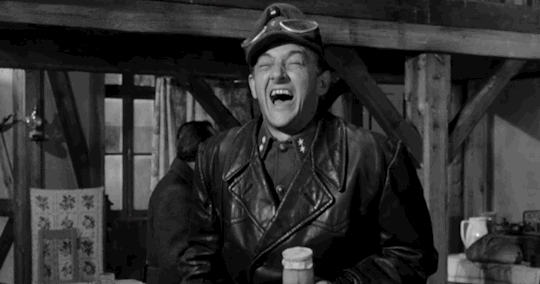

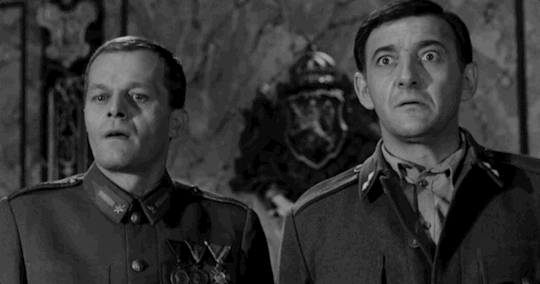


A tizedes meg a többiek - 1965. Rendezte: Keleti Márton. Főszerepben: Sinkovits Imre, Major Tamás, Darvas Iván, Pálos György, Márkus László, Horváth Tivadar, Cs. Németh Lajos. https://podcasters.spotify.com/pod/show/magyarfilmekatolcettig
#magyar#film#hungarian#movie#mfac#magyar filmek ától cettig#régi#retro#keleti márton#a tizedes meg a többiek#1965#sinkovits imre#darvas iván#pálos györgy#márkus lászló#horváth tivadar#cs németh lajos#major tamás
36 notes
·
View notes
Note
Ooh, one more thing.
Sorry if this has been answered already, but I gotta know:
When did the WWC ROs realize that they were queer? Have they ever tried dating the same gender before? Also, how do the residents Croun react to same-sex couples and genderqueer people? Is it like anywhere else in the 90s or do they lean more towards being indifferent?
It’s been answered but a while ago so it’s nice to refresh memories and such
Imre has slept with men before never dated truly just casual. Nia has dated girls but not so openly. With Imre he wanted to try it and for Nia she just always knew women were pretty and never gave it much thought beyond that she liked them. Lorcan has no idea, although he’s getting strange sensations he doesn’t know what to do with a certain dead-eyed loser who might or might not be human
So it’s mostly indifference. Some residents (if you took lorcans solo route in episode 4) are disgustingly homophobic. But the majority of residents will stare but won’t do anything cause they simply don’t care, if you asked them they would say they are against legalizing same sex marriage but that they can’t muster up energy to give much of a shit beyond that and same goes for trans people they might refer to them as “trannies” but they treat them like they treat the supernatural shit, they just shrug
36 notes
·
View notes
Text
Events 6.16 (after 1910)
1911 – IBM founded as the Computing-Tabulating-Recording Company in Endicott, New York. 1922 – General election in the Irish Free State: The pro-Treaty Sinn Féin party wins a large majority. 1925 – Artek, the most famous Young Pioneer camp of the Soviet Union, is established. 1930 – Sovnarkom establishes decree time in the USSR. 1933 – The National Industrial Recovery Act is passed in the United States, allowing businesses to avoid antitrust prosecution if they establish voluntary wage, price, and working condition regulations on an industry-wide basis. 1940 – World War II: Marshal Henri Philippe Pétain becomes Chief of State of Vichy France (Chef de l'État Français). 1940 – A Communist government is installed in Lithuania. 1948 – Members of the Malayan Communist Party kill three British plantation managers in Sungai Siput; in response, British Malaya declares a state of emergency. 1955 – In a futile effort to topple Argentine President Juan Perón, rogue aircraft pilots of the Argentine Navy drop several bombs upon an unarmed crowd demonstrating in favor of Perón in Buenos Aires, killing 364 and injuring at least 800. At the same time on the ground, some soldiers attempt to stage a coup but are suppressed by loyal forces. 1958 – Imre Nagy, Pál Maléter and other leaders of the 1956 Hungarian Uprising are executed. 1961 – While on tour with the Kirov Ballet in Paris, Rudolf Nureyev defects from the Soviet Union. 1963 – Soviet Space Program: Vostok 6 mission: Cosmonaut Valentina Tereshkova becomes the first woman in space. 1963 – In an attempt to resolve the Buddhist crisis in South Vietnam, a Joint Communique was signed between President Ngo Dinh Diem and Buddhist leaders. 1972 – The largest single-site hydroelectric power project in Canada is inaugurated at Churchill Falls Generating Station. 1976 – Soweto uprising: A non-violent march by 15,000 students in Soweto, South Africa, turns into days of rioting when police open fire on the crowd. 1977 – Oracle Corporation is incorporated in Redwood Shores, California, as Software Development Laboratories (SDL), by Larry Ellison, Bob Miner and Ed Oates. 1981 – US President Ronald Reagan awards the Congressional Gold Medal to Ken Taylor, Canada's former ambassador to Iran, for helping six Americans escape from Iran during the hostage crisis of 1979–81; he is the first foreign citizen bestowed the honor. 1989 – Revolutions of 1989: Imre Nagy, the former Hungarian prime minister, is reburied in Budapest following the collapse of Communism in Hungary. 1997 – Fifty people are killed in the Daïat Labguer (M'sila) massacre in Algeria. 2000 – The Secretary-General of the UN reports that Israel has complied with United Nations Security Council Resolution 425, 22 years after its issuance, and completely withdrew from Lebanon. The Resolution does not encompass the Shebaa farms, which is claimed by Israel, Syria and Lebanon. 2002 – Padre Pio is canonized by the Roman Catholic Church. 2010 – Bhutan becomes the first country to institute a total ban on tobacco. 2012 – China successfully launches its Shenzhou 9 spacecraft, carrying three astronauts, including the first female Chinese astronaut Liu Yang, to the Tiangong-1 orbital module. 2012 – The United States Air Force's robotic Boeing X-37B spaceplane returns to Earth after a classified 469-day orbital mission. 2013 – A multi-day cloudburst, centered on the North Indian state of Uttarakhand, causes devastating floods and landslides, becoming the country's worst natural disaster since the 2004 tsunami. 2015 – American businessman Donald Trump announces his campaign to run for President of the United States in the upcoming election. 2016 – Shanghai Disneyland Park, the first Disney Park in Mainland China, opens to the public. 2019 – Upwards of 2,000,000 people participate in the 2019–20 Hong Kong protests, the largest in Hong Kong's history.
1 note
·
View note
Text
US sanctions on bank in Hungary mark new low in relations
For the first time since Russia's invasion of Ukraine, the US has sanctioned a Hungary-based bank. Prime Minister Orban's government seems unimpressed but has announced it will withdraw its staff from the institution.

Anyone who looks at Hungary's pro-government media outlets these days could get the impression there is no war raging in eastern Europe. Russia's invasion of Ukraine is mainly referred to as the "Ukrainian crisis," with the US portrayed as the aggressor. Pro-government media outlets suggest the US is attacking Hungary's sovereignty and "pulling it into a war."
Not even in the final years of Hungary's socialist dictatorship did anti-Americanism reach such shrill extremes. This recent backlash was sparked by an anti-Russian sanctions package announced by the US on April 12 that also affects Hungary. The sanctions include measures that impact the Russian-Hungarian International Investment Bank (IIB) and its management and IIB deputy head Imre Laszloczki, a Hungarian national.

This is not a first. The US has sanctioned politicians and business figures from allied countries before, including entities in Albania and Bulgaria. Hungarian citizens have also been sanctioned, though their identities have not been made public. But this time, for the first time since the start of Russia's war on Ukraine, an entity based in Hungary— a NATO ally and EU member — is officially being sanctioned. The IIB is not just any bank, but one of which Hungary owned around 25% of the shares although it has majority Russian ownership.
On Thursday, however, Hungary's Economic Ministry announced it would withdraw from the IIB.
The operations of the bank, which was once a development bank for the communist eastern bloc, no longer had any relevance to Hungary, the Ministry for Economic Development said in Budapest. Hungary was for this reason withdrawing its staff.
The operation of the Russian-controlled International Investment Bank has "become impossible" after US sanctions so Hungary has quit the bank, Prime Minister Viktor Orban said on Friday.
IIB: Hungary's 'spy bank'
In Hungary, the IIB is also known as the "spy bank," as its leadership is comprised of individuals liked to or associated with Russia's FSB intelligence service. IIB head Nikolay Kosov comes from a family of KGB officers. The bank, whose headquarters were moved from Moscow to Budapest in 2019, plays an important role in Russo-Hungarian relations. IIB deputy head Laszloczki manages Hungarian economic policy in Russia and the Central Asian republics.

These sanctions against the Hungary-based bank mark a new low point in the already strained and now openly hostile relations between Hungary and the US. Orban has never concealed his dislike for the US Democrats and US President Joe Biden and remains a friend and fan of Biden's predecessor, Donald Trump. Orban was the first EU leader to congratulate Trump on his election victory in 2017. And more recently, when Trump faced criminal indictment for hush money, Orban tweeted, "Keep on fighting, Mr. President! We are with you, @realDonaldTrump!"
Orban's close ties to Russia
US government representatives have repeatedly criticized the state of Hungary's democracy and rule of law, denounced corruption among Orban's entourage and expressed concern over Hungary's close ties to Russia.

Hungary is the only EU country that still maintains friendly relations with Russia today. It has only half-heartedly condemned Russia's war against Ukraine. On Tuesday, Hungary's foreign minister, Peter Szijjarto, traveled to Moscow for talks on Russian gas supplies and on Russian investments in the Hungarian nuclear industry. On the same day, Belarusian Foreign Minister Sergei Aleinik came to Budapest for talks.
Homophobic abuse
Hungary has so far supported the EU's sanctions on Russia,which can only be enacted if all 27 members of the bloc agree to them. For this, Moscow recently designated it an "unfriendly country." However, Orban has repeatedly spoken out in favor of ending the sanctions against Russia. The Hungarian leader has also made numerous controversial statements, for instance claiming the war in Ukraine would not have erupted if Trump were still US president. Orban indirectly blames the Biden administration and the "pro-war" EU for Russia's full-scale invasion and ongoing war in Ukraine.

David Pressman, the US ambassador to Budapest, is openly homosexual, making him an ideal target for Hungary's homophobic government. Upon taking office in the Hungarian capital, Pressman was subjected to savage abuse by pro-government activists and the media. This has further strained US-Hungarian relations.
Anti-American media
Hungary's government, in turn, has long accused Pressman of supporting opposition parties and seeking to overthrow Orban. One of the reasons is that the US Embassy currently supports a pro-Ukrainian poster campaign in Hungary that reads: "Russians go home" — a campaign slogan once used by Orban's Fidesz party during the fall of communism.
Pressman, for his part, is friendly in tone but critical in his assessment of the Orban regime. Sometimes he can't resist sarcastic digs: Last fall, for example, the Budapest embassy posted an online quiz with bizarre anti-American and pro-Russian statements from Hungarian politicians and journalists.
After Pressman announced US sanctions against the IIB late Wednesday afternoon, representatives of Hungary's governing Fidesz party said Hungary would defend its sovereignty and not change course.
Hungarian pro-government media outlets, meanwhile, continued spewing anti-American vitriol. The widely read tabloid portal Origo ran the headline: "The USA has been exposed again: it betrays all its allies and stabs them in the back."
Orban on Friday told state radio the United States was an important ally but there was a difference of views over the war in Ukraine, and the US had "not given up on its plan to squeeze everyone into a war alliance," a step he said Hungary would resist.
3 notes
·
View notes
Text
Russian 'Trojan horse' bank stokes unease in Hungary
Called "Putin's Trojan horse" by Hungarian opposition politicians, a small Russian-dominated bank in Budapest has sparked unease ahead of Russian President Vladimir Putin's visit to the capital Wednesday.
The International Investment Bank (IIB) officially completed the move of its headquarters to Budapest last month.
But concerns persist that it is a vehicle for extending Russian political influence in Central Europe, and potentially for intelligence-gathering.
Hungarian opposition politicians have described the bank as a "national security threat" and a "nest of spies".
And in September, nine US senators and two Members of Congress set out their concerns in a letter to Washington's ambassador in Budapest.
The bank "is widely seen as an arm of the Russian secret service," they wrote.
Major shareholder -
Founded in 1970 by the Soviet Union to foster links within the communist bloc, the IIB is registered as an official Russian state organ.
Billed as a version of the London-based European Bank of Reconstruction and Development (EBRD), albeit smaller, the bank distributes loans to firms and projects in member countries.
Five of its nine current members are EU and NATO countries Bulgaria, Czech Republic, Hungary, Romania and Slovakia. The other members, besides Russia itself, are Cuba, Mongolia and Vietnam.
Hungary left the bank during nationalist Prime Minister Viktor Orban's first term in 2000, citing a lack of transparency. But three years after Putin revamped it in 2012, Hungary rejoined, and is its second biggest shareholder.
The move to Budapest will "strengthen the role of Hungary and Budapest as an international financial centre", the Hungarian government's press office told AFP in an email.
Security risks -
The bank is expected to have more than 100 international staff when fully operational in a permanent office next year, but the background of some senior figures has raised concerns among some observers.
Although the bank has firmly denied ever carrying out spying activity and rejects the 'Trojan horse' analogy, its chairman, veteran diplomat Nikolay Kosov, has alleged family links to the Russia's KGB.
Hungary's delegate to the bank, Imre Boros, worked for Hungarian intelligence during the country's pre-1990 communist era.
Legislation approved by Budapest in March, meanwhile, grants wide-ranging diplomatic immunity to some of its foreign staff.
"Staff regulations follow the usual practise for significant international organisations like the IMF," the government's press office told AFP.
The IIB says it is entitled to such privileges as it is registered with the United Nations as a multilateral, intergovernmental development bank.
It "receives no more" immunity than the EBRD or the World Bank in the US, said IIB senior official Imre Laszloczki in a recent interview in Hungarian media.
But observers like Andras Racz, a Russia expert at the German Council on Foreign Relations, argue that the leeway given to the IIB is much wider.
"There are clear security risks that don't look to be addressed properly," Racz said.
Nor will the bank's activities be subject to financial control or regulatory supervision in Hungary, he told AFP.
"The language of the bank is Russian, the headquarters was in Moscow for the last 49 years, the director is Russian. They have de facto control due to the decision-making structure. It is a Russian-dominated bank," he said.
Economic opportunities? -
According to Budapest, the move "will bring shareholders, including Hungary, positive results, and will offer players of the Hungarian economy further new opportunities".
But some analysts suspect the bank's loans could easily be funnelled toward business allies of Orban.
Others however point out that the bank's lending portfolio -- around 750 million euros ($830 million) in 2018 -- is dwarfed by those of western development lending institutions.
"The IIB may have a bit of an economic impact, but the size will be small," Andras Deak, an expert at the Hungarian Academy of Sciences, told AFP.
Moscow's leverage with Hungary has grown since Orban adopted a policy of "eastern opening" toward Russia, Turkey and China after returning to power in 2010.
In 2014 he signed a 10-billion euro ($11 billion) loan deal with Putin to expand Hungary's only nuclear plant at Paks, south of Budapest.
The IIB is likely to be discussed this week in Budapest during a meeting between Putin and Orban.
They are also due to sign a major gas energy supply deal and finalise a Hungarian-Russian consortium to produce railway carriages for Egypt.
2 notes
·
View notes